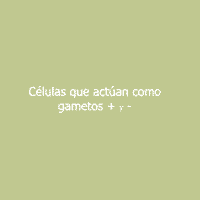I'm working in other windows updating old posts mostly to transfer photograph links from Photobucket to Blogger while also re-doing the photographs in post processing and re-writing the posts, removing most of the silliness and swears. I'm at October 2010 and encountered a post about Flatiron breakfast, a simple post but where I indulge professorial propensity. In Reader's Digest form and with photographs I discuss vegetables, wheat, herbs, yeast and yeast cellular division.
I must have thought that was funny.
I don't understand my past self sometimes.
Anyway.
Yeast cells are to microbiologists what the crab nebula is to astronomers, the most thoroughly studied subject in their field. You can find thousands of charts in browser images describing the ways yeast cells have to replicate, asexually and sexually. This, and their simplicity makes them fascinating and useful subjects. Oddly they don't say male/female, rather type "a" and type " ".
".
Of all the charts that I looked at one seemed the best because it showed three ways yeast cells replicate. The other charts do too, but this was the most clear.
One method they simply duplicate their cellular material and bud. A cell wall forms between the two sets of DNA and both cells bud to duplicate their material and bud again.
Another method two cells with two full sets of DNA match and combine their DNA material for four sets.
Another method is under duress a durable shell forms around each set of DNA material into hard tiny packages where they blow around the atmosphere and bounce across the frozen landscape, float around in the ocean currents for ages until they land in salubrious environments where they bud until they come near their type and combine with similar cells. That's why when you give them a little moisture and heat and food they go nuts in orgiastic ecstasy using up all the available material until it's exhausted or until conditions worsen and they clam up to protect themselves. They're crazy.
The best chart that I saw was in Spanish.
They drew an exclamation point for the point of catastrophe. In my opinion this chart shows the cell's adaptability the best. This chart is six tiny animations running concurrently. The later animations wait their turn. If the animations are out of synch then refresh your browser and that will get them lined up. (The files will be on your computer so they can all start at the same time.)
I must have thought that was funny.
I don't understand my past self sometimes.
Anyway.
Yeast cells are to microbiologists what the crab nebula is to astronomers, the most thoroughly studied subject in their field. You can find thousands of charts in browser images describing the ways yeast cells have to replicate, asexually and sexually. This, and their simplicity makes them fascinating and useful subjects. Oddly they don't say male/female, rather type "a" and type "
 ".
".Of all the charts that I looked at one seemed the best because it showed three ways yeast cells replicate. The other charts do too, but this was the most clear.
One method they simply duplicate their cellular material and bud. A cell wall forms between the two sets of DNA and both cells bud to duplicate their material and bud again.
Another method two cells with two full sets of DNA match and combine their DNA material for four sets.
Another method is under duress a durable shell forms around each set of DNA material into hard tiny packages where they blow around the atmosphere and bounce across the frozen landscape, float around in the ocean currents for ages until they land in salubrious environments where they bud until they come near their type and combine with similar cells. That's why when you give them a little moisture and heat and food they go nuts in orgiastic ecstasy using up all the available material until it's exhausted or until conditions worsen and they clam up to protect themselves. They're crazy.
The best chart that I saw was in Spanish.
They drew an exclamation point for the point of catastrophe. In my opinion this chart shows the cell's adaptability the best. This chart is six tiny animations running concurrently. The later animations wait their turn. If the animations are out of synch then refresh your browser and that will get them lined up. (The files will be on your computer so they can all start at the same time.)
 |  |  |
 |  |  |
The CSS code for this template puts borders around photos presumably so they can change colors when the photo is visited.
The template for my site is more simple. It doesn't have that CSS code.
To eliminate them here I'd have to change the code for the whole site and I don't want to do that just for this one page. So I'm stuck with the borders.
The table is a lot more elegant without them.
And that BUMS ME OUT!
Because the frames ruin my picture.
1 comment:
Looks like the dark brownish-black shapes may have escaped description.
How else are the aliens who've been cruising around lately going to figure out how life works down here?
https://www.sciencealert.com/cattle-are-being-mysteriously-drained-of-blood-in-oregon-and-it-s-happened-before
.
Post a Comment